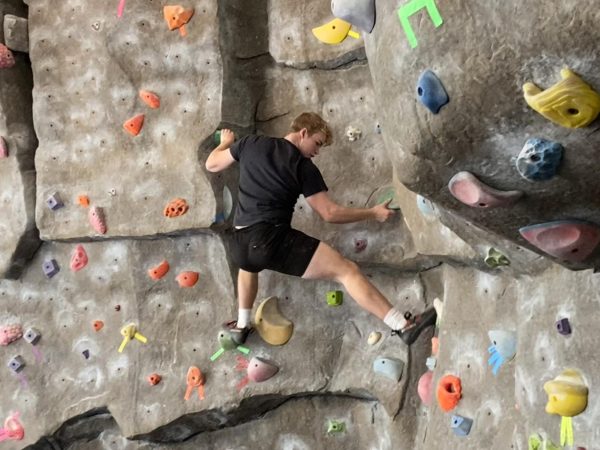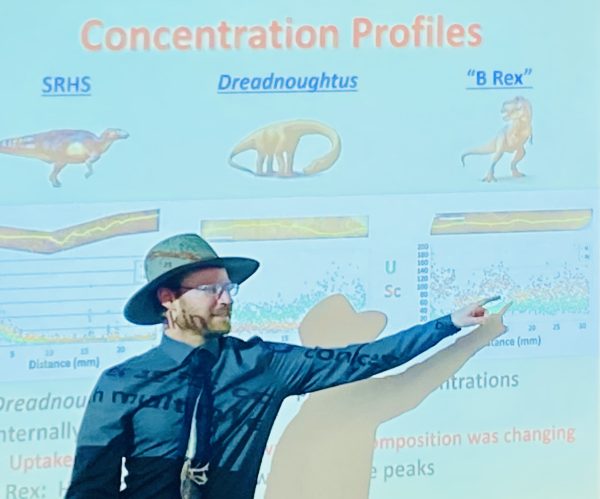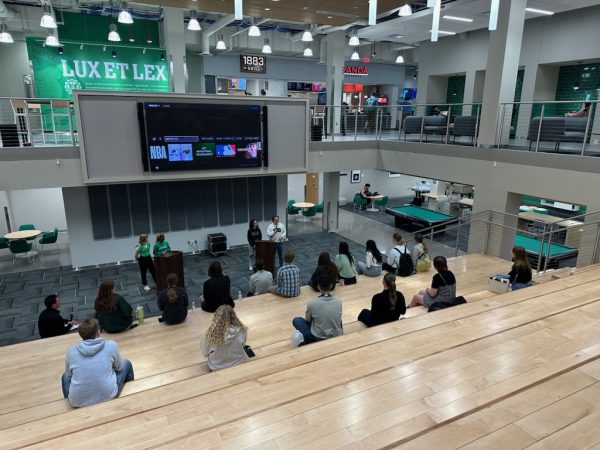UND’s ROTC excels at West Point
Many miles up the Hudson River in New York, huddled in a clearing of Appalachia country forest, lies the storied United States Military Academy, commonly known as West Point. Grey battlements and fortress-like structures rise stoically above the forest and river and the halls of West Point have been walked by some of our Country’s greatest leaders. Last weekend the voices and movements of many military groups from all over the world echoed across West Point as 58 teams assembled for one of the most diverse and far reaching military competitions in the world. The University of North Dakota’s Fighting Sioux Battalion of Army ROTC (Reserve Officer Training Corps) competed and came away with sixth place overall in a performance that was a personal best for UND’s ROTC program. This competition, known as the Sandhurst Military competition, is held annually and the nature of its history and illustrious background makes participating a huge accomplishment.
The Sandhurst competition began in 1967 when the Royal Military Academy Sandhurst (RMAS) presented West Point with a British officer’s sword. The intent was for the sword to be the prize for a competition, the aim of which was to promote military excellence among the Corps of Cadets between the two schools. The original purpose statement reads as follows – “To provide the Corps of Cadets with a challenging and rewarding regimental skills competition, which will enhance professional development and military excellence in selected soldier skills.”
Since the presentation of the sword in 1967, Sandhurst has grown into an international competition that has traditionally featured the RMAS, teams from the Regiments of West Point, eight ROTC schools from across America, New Zealand, Germany, China and other military schools from the far reaches of the globe.
The road to qualify for Sandhurst as an ROTC team is a long and difficult process that the University of North Dakota has traversed many times in the last several years. The push to compete in Sandhurst begins when classes start in the fall and UND ROTC begins to assemble what is known as its Ranger Challenge team. Ranger Challenge is a localized competition that is held within UND’s Brigade. Army ROTC in the United States is divided into eight Brigades, each one crowning a victor at the end of the fall’s Ranger Challenge competition to represent the Brigade at Sandhurst. This past fall the UND Ranger Challenge team took first place at a regional competition in Camp Ripley, Minn. between fellow ROTC schools from North Dakota, South Dakota and Minnesota. In doing so, UND moved on to the Brigade Ranger Challenge competition held at the University of Kansas and placed first in that competition as well. As the top school out of the nearly 100 within its Brigade, North Dakota became one of eight ROTC programs to compete at Sandhurst for the third year in a row.
In order to prepare for Sandhurst, UND’s Ranger Challenge team began practice at five in the morning, five days a week with some practices occasionally being held over the weekend. The team endured challenging workouts in order to prepare themselves physically while also practicing the many military skills that were featured in the competition. This regimen began in late August when classes began and only ceased when the team left for the competition in mid-April. “I felt this year we were the most prepared we had ever been,” said UND cadet Jon Giuliani, a two year participant of Sandhurst. “We knew what to expect and we spent all year getting ready for it.”
The challenge of qualifying for Sandhurst was only a prequel to the strenuous nature of the competition itself. North Dakota’s cadets arrived a week before the competition was held in West Point to familiarize themselves with the course and begin training. The actual competition was held on April 19th and 20th and UND hit the ground running. “The competition was really physically challenging, especially with all of the running that it demanded,” said Giuliani. “When it was over we ran close to 21 miles and a lot of that was up the mountains (of West Point) and across really harsh terrain.”
The opening event at Sandhurst was rifle marksmanship. North Dakota scored 58 points to take first place in the event. The other events held that day included pistol marksmanship, land navigation, grenade throwing and an obstacle course. By the end of the first day North Dakota’s hopes ran high as they sat in first place overall out of the 58 teams in attendance. “We felt like we could win it at the start,” said UND cadet Michael Buhl. “After the first day it only reinforced that thought for us.”
As the second day’s events progressed, North Dakota remained poised to capture first overall in the competition. The second round of military based events included a wall climb in which the team placed in 16th, a reconnaissance and surveillance challenge that UND placed 23rd and a final obstacle course in which North Dakota placed 18th. At the end of the competition, UND’s cadets headed into the award ceremony feeling that they had earned the Sandhurst Sword.
Once the final tally was counted, it was the Royal Military Academy of Sandhurst’s Blue team that came away with complete victory after scoring 650 points overall. Penn State’s ROTC team came in second overall with a final tally of 618 points, while North Dakota found themselves in sixth place with 561 points. “We thought we had first place,” said Buhl. “Once we heard that we had taken second overall for ROTC our hopes were kind of crushed.” Despite the disappointment in not taking first, the finish was UND’s best ever in the competition and was one to reflect positively on. “Even though we didn’t win, it was still something we were very proud of,” said Buhl. “As we thought about it upon leaving, we realized what an honor it was to compete against so many teams from across the world and what it meant to represent UND in front of them.”
Butz can be reached at [email protected]











